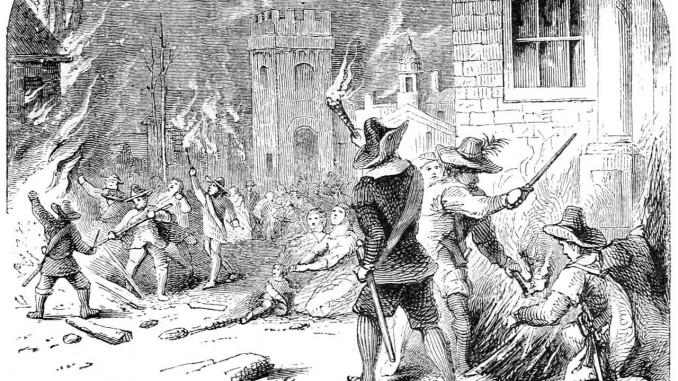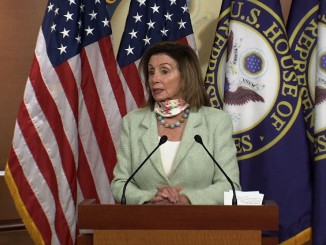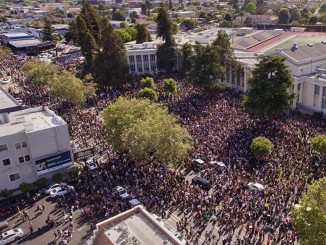
Since the explosion of outrage following the police murder of George Floyd, millions of Americans (white and Black, and others as well) have focused their attention on race and racial oppression in the United States. They have looked back to the murders of Breonna Taylor and Ahmaud Arbery this year as well as back a few years to the killings of Eric Garner, Michael Brown, and many more. And, if they have kept going, they’ve found that U.S. history is a centuries long timeline of Black people killed by white people.
Many have taken sides, marching and crying out for justice with the cry “Black Lives Matter,” while some others shout “Blue Lives Matter” and “Support the Police” in an attempt to sound like they care equally about all lives. Some think that racism is inherent, a natural thing, and that white people will never treat Black people with respect and justice.
As we think about these beliefs and the huge challenge racial division still plays in the U.S., it is worth remembering that “race” as we know it in this country was conjured up and used by the early ruling class here as a response to poor Black and white workers uniting in rebellion in the late 17th century! Here’s how it happened.
In spring of 1676, the Virginia Colony and Chesapeake region of the British Empire was ruled by a small stratum of society – tobacco plantation owners and British colonial officials.
The remainder of the colony included: indentured (also known as bonded) servants, white men who had their passage to the colony paid in return for some years of service, yet were treated nearly as poorly as slaves; white freedmen, freed from indentured servitude and now small landowners, farmers, and laborers in the towns; and African-descended Black laborers, some of whom were enslaved but many of whom were in varying states of indentured servitude as well, and some of whom were also small farmers and laborers. In other words, there were at least thousands of poor white and Black farmers and workers in the colony, many indentured, some enslaved, but most free. And, because of their shared economic situation, they often worked together, ate and drank together, and talked about their oppressed positions in the colony, and on some occasions even fled from servitude together.
In addition, although not recognized by the colonial society (other than when they needed to be used, exploited, or pushed off their land), there were thousands of indigenous people, including the Doeg tribe and others, who were slowly being pushed westward and coming into violent conflict with the white settlers encroaching on their lands.
The class division between the wealthy ruling class and the masses of farmers and workers had already led to a handful of small revolts since 1663. But in the years leading up to 1676, tensions had sharpened not only because class inequalities, but also because of the perceived indifference of the ruling class to the situation of farmers on the frontier as they came into conflict with the indigenous communities to the west.
After years of demands for more support in their conflicts with the indigenous population, Nathaniel Bacon led a revolt of farmers against the colonial government. This portion of the rebellion saw white farmers attack and put on the run government leaders, and was guided by Bacon’s goal of forcing the government to help settlers push the indigenous people out of Virginia.
It is without a doubt repulsive to learn of the racist nature of the settlers’ attacks on the indigenous people. At the same time, this rebellion is worth looking at for lessons it has to teach us about the construction of racism in the colonies.
Bacon’s “army” consisted of many poor whites (both freed and bonded) and poor Blacks (freed, bonded, and enslaved). Poor white and Black workers and farmers joined together in a revolt against the colonial regime and big landowners responsible for their exploitation and impoverishment. Even when Bacon died, they persisted in their rebellion, forcing English ships to threaten them with bombardment before their final surrender. The last group of one hundred rebel holdouts consisted of eighty Black people and twenty English.
Their cause undoubtedly denied indigenous people’s rights. But this unity between poor white and Black workers and farmers terrified the planters and the colonial government. If white and Black workers could unite again in the future, they could easily overthrow the government and planter aristocracy, which was of course only a small minority of the population. They had to find a way to make sure it never happened again.
They quickly hit on a cunning, cruel, and divisive way to do so: give white workers certain rights and advantages over Black workers, while at the same time enshrining Black slavery into law. In the next twenty-five years, the colonial legislature passed a series of laws designed specifically to privilege white workers over Black, and to divide the two groups. In the words of one historian, “by a series of acts, the assembly deliberately did what it could to foster the contempt of whites for Blacks and Indians.”
Once the legislature was done, Blacks were not allowed to own slaves; Blacks were not allowed to own weapons; Blacks were not allowed to “lift their hand” against Christians; Blacks could be punished by dismemberment, but white indentured servants could no longer even be whipped; slaves were deprived of property, which was then turned directly over to whites; harsh punishments were implemented for miscegenation; people with any African heritage were defined as Black; release from slavery was forbidden.
By 1705, with these laws, Virginia’s system of slavery based on skin color was in place. White workers were given freedom from servitude, the ability to own property, and other privileges that Blacks were specifically denied. And the mixing of the two groups was more restricted than ever before. These factors all made it less and less likely that poor white workers and farmers would risk their small privileges to help more oppressed Black workers. And, once white-only slave patrols were instituted in 1727, white workers and farmers actually were tasked with directly oppressing now enslaved Blacks, and were usually paid to do so.
In other words, the rulers – the tobacco planters and colonial government – had successfully divided white workers and farmers from Black workers, who were now legally enslaved.
In the coming decades, and despite variations from state to state, the Virginia system of Black slavery spread throughout the south, creating a rigid division based on skin color. In this way Bacon’s Rebellion was the catalyst for the creation of “race” in the United States.
The next three hundred years witnessed the violent exploitation and oppression of Black people in the United States: first as slaves, then as destitute sharecroppers and tenant farmers, then as a super-oppressed, super-exploited group of workers within the larger working class.
Meanwhile, the genocidal assaults on indigenous tribes expanded all the way across the continent. The modern United States was built on the racist slavery of Africans and genocide of indigenous peoples.
Bacon’s Rebellion and what came after provide us with significant lessons that are valuable for us in 2020.
In the first place, the idea of “race” in this case must be understood as the creation of the Virginia ruling class three hundred and fifty years ago. As Theodore Allen, one of the most prominent historians of class and race in the United States, writes: “the ‘white race’ must be understood, not simply as a social construct, but as a ruling class social control formation.”
The idea of whiteness, and in opposition to that, Blackness, was created, nurtured, and promoted by the dominant class of people to keep white and Black working people (or other people of color) from ever uniting to challenge the system.
In Bacon’s Rebellion, Black and white workers and farmers united to fight for their common interests. Although their 1676 rebellion failed, and was compromised by their own racist violence against indigenous people, their example hints at what is possible when different groups of workers unite. If all workers who are exploited and oppressed by the system were to unite in rebellion, we would be a powerful force that could overcome today’s ruling class.
By knowing this history, we can begin to chip away at the ideology of “race” and the divisions that it causes. And if we do that, we can begin to build a working-class unity – a solidarity – that could challenge the system that dominates us.




